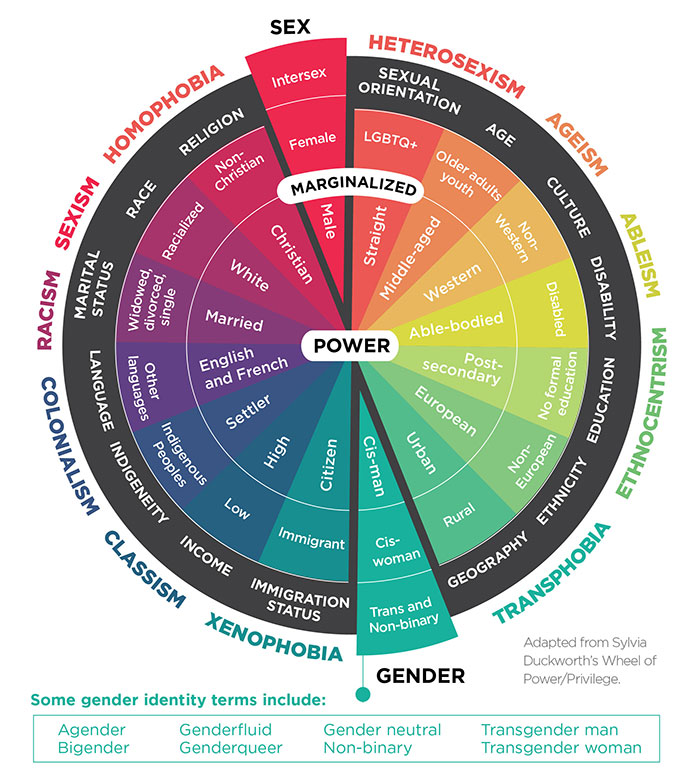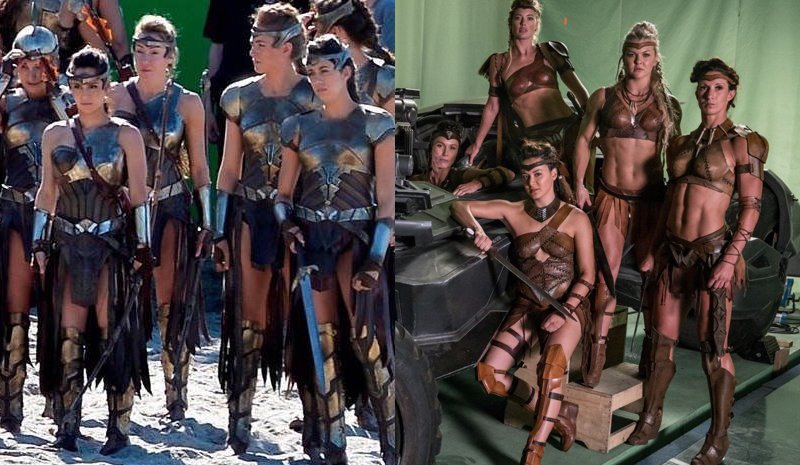5.5 Feminist Theory
Feminism is the advocacy of women’s rights on the basis of the equality of the sexes. Feminist theory, then, extends feminism into established scholarly disciplines. It aims to understand the nature of gender and gender inequality. It examines women’s and men’s social roles, experiences, jobs, interests, household chores, and feminist politics in various fields, such as anthropology and sociology, political theory, literature, education, and philosophy.
Feminist theories first emerged in the last 18th and early 19th centuries in publications such as “A Vindication of the Rights of Woman” by Mary Wollstonecraft in 1792 (Wollstonecraft, 2013), the story of “Changing Woman” as told by the Diné (Navajo) (Wright, 2019), “Ain’t I a Woman” by Sojourner Truth, and Susan B. Anthony’s published speech “Arrest for Illegal Voting” after her arrest for trying to vote as a U.S. Citizen. These women and others are considered the “First Wave” of Feminism. The term first-wave feminism itself was coined by journalist Martha Lear in 1968, who considered herself to be a second-wave feminist (Lear, 1968).
First wave feminism is characterized and criticized for over-focusing on the fight for women’s political power, and lacking any effort to combat social inequalities, particularly for BIPOC individuals. A more in-depth explanation of the history of the feminist movement can be found here.
Modern sociology and gender studies use feminist theory to focus attention on stories and experiences that have not been historically considered in academic research. Some examples of using feminist theory in sociology are the investigation of metal labor born mostly by women, the disappearance of Native American women, violence towards the trans community, studies into childhood trauma as a result of poverty, research on the economic benefits of the “microloan” industry, allowing women access to credit in order to open business, as well as studies on the concept of the “male identity” in society and the representation of other expressions of “masculinity.”. Feminist scholars note that feminism does not demand the exclusion of men, but simply advocates for the end of the over-emphasis of traditional male concerns and over-representation of men in positions of power.
5.5.1 Intersectionality and Feminist Theory
In Chapter 3, we learned about the history and importance of intersectionality. Now, we want to consider how we can critique the dominant culture’s historical responsibility for maintaining gender norms. We will do so using the sociological imagination and other important sociological frameworks.
For example, conflict theory says that social stratification (unequal access to resources) is a significant reason for societal conflict. But if we also add the feminist theory lens to social stratification, it leads us to consider the different ranges of inequality among women and men in a stratified system and the types of conflict or violence these different groups experience. The sociological imagination allows us to consider the life experiences of a college student who is struggling to get good grades. If we then also apply crip theory, we start to ask questions about the student’s ability to access college resources as a disabled student. Using sociological theories in an intersectional way is the cutting edge of sociological research today.

Figure 5.7. This is a useful image of examples of identity and social position variables and dimensions, as well as processes of oppression, discrimination, privilege, and power that can be included in intersectional analyses. Imagine from https://cihr-irsc.gc.ca/e/52352.html. Fair use license.
5.5.1.1 Male Gaze vs. Female Gaze
The male gaze is a term the film industry has used to describe how the viewer should see the things presented to them through the lens of the heterosexual male (figure 5.8). Feminist film theorist Laura Mulvey created the term “Female Gaze” and used it to counter the male gaze in movies. Straight male preferences for what men and women should look like and their behaviors do not need to be the only preferences considered in the media. The preferences between the male and female gaze are often profoundly different. For instance, Amazonian women warriors are portrayed in two different DC Comics movies: one directed by a woman and the other by a man. This specific example was explored by blogger Kimi at The Amazons’ New Clothes – The Golden Lasso.
Kimi notes how in the first movie (Wonder Woman), the costume design considers the realistic aspects of hand-to-hand combat and being in a battle: protection of vulnerable areas and comfort. They also considered historical accuracy for the real group of women warriors the DC Amazons are based on: women of the Russian steppe who were famed for their archery and horsemanship. This film was directed by a woman (Patty Jenkins), as well as the costumes (Linda Hemming).
The second picture is from the film Justice League, set in the same cinematic universe, but has a very different take on the Amazons. The costume choice considers none of the previous issues and is primarily concerned with making the women look sexually appealing rather than realistic warriors. The director of Justice League was Zack Snyder, with the costumes designed by Michael Wilkinson.

Figure 5.8. Directors have a huge role in how groups are represented in the media, and therefore to the public. What’s the priority – good storytelling, or money at the box office? Screenshots from Wonder Woman and Justice League © Warner Bros. Pictures are included under fair use.
5.5.2 Licenses and Attributions for Feminist Theory
Figure 5.7. Infographic in “Meet the Methods series: Quantitative intersectional study design and primary data collection” by Greta Bauer, Ph.D., Canadian Institute of Health Research, is licensed under the CIHR License. Adapted from Sylvia Duckworth’s Wheel of Power/Privilege.
Figure 5.8. Screenshots from Wonder Woman and Justice League © Warner Bros. Pictures are included under fair use.
Parts of “Feminist Theory” is adapted from “Feminist Theory” at https://en.wikipedia.org/wiki/Feminist_theory Text is available under the Creative Commons Attribution-ShareAlike License 3.0. The rest is by Dana L. Pertermann is licensed under CC BY 4.0.

